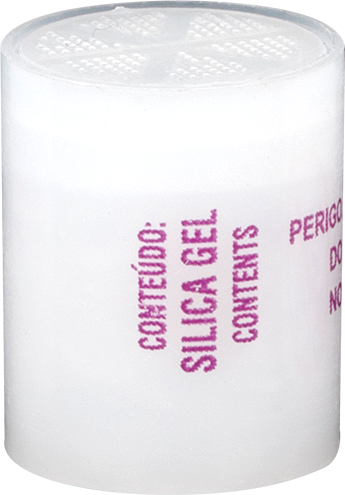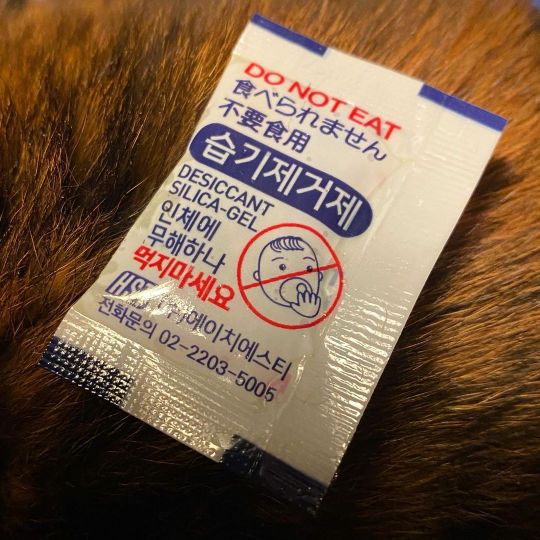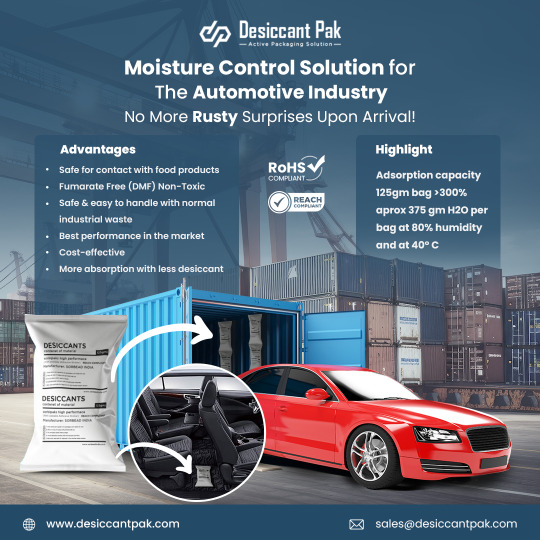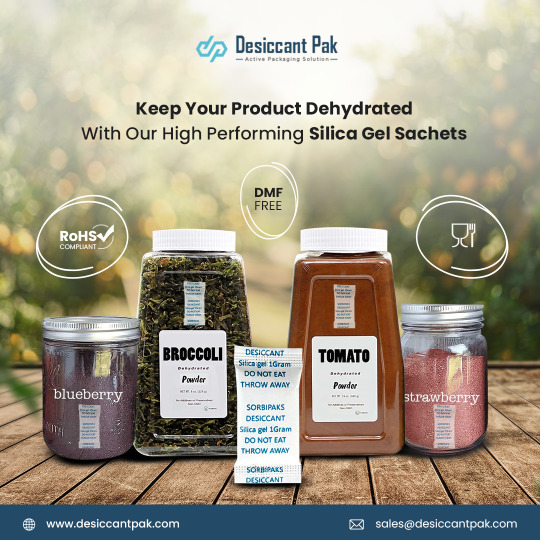#desiccantsilicagel
Explore tagged Tumblr posts
Text
The Importance And Benefits Of Using Cargo Desiccants For Copper Export

In the import or export of goods in cargo and shipping containers, no matter if they are sensitive items or industrial products, they need to be well safeguarded from the detrimental factors of moisture, dust, heat, humidity, and contamination. When you use high quality and premium performance cargo desiccants for the packaging, storage, and transportation of products during export, they can provide high protection by efficiently adsorbing the excess moisture from the surroundings, keeping them clean and dry.
Cargo desiccants for copper export can greatly protect and safeguard the various copper products and materials during transit by controlling moisture levels inside shipping containers. They can also prevent condensation such as container rain and corrosion formation on the copper material and substrate, to ensure they are preserved in perfect condition throughout the transit and storage durations.
How cargo desiccants protect copper exports?
Cargo desiccants are made of highly adsorbent materials that can effectively adsorb excess moisture, and humidity from the surrounding air keeping the air clean and dry which is optimum for the storage and transportation of copper products and materials. Since metal surfaces are highly susceptible to moisture changes or varying weather conditions, they can easily form rust and corrosion on their surfaces that can deteriorate their effectiveness and quality.
During copper export, the surfaces are also susceptible to damage due to container rain or container sweat which is common during cross border transportation when there are changes in weather conditions and levels of humidity on sea travel. Thus cargo desiccant bags when hung inside the cargo or shipping container can adsorb all the excess container rain and sweat to maintain optimum storage conditions for copper export.
Cargo desiccants are made of natural and non-reactive materials and substances that can be safely used with various metals including copper, and do not react or damage the products or material. Silica gel, clay, and molecular sieve desiccants are popular choices when using cargo desiccants for copper export and can be used for the proper transportation of copper products.
Cargo desiccants not only protect the cargo but also help maintain the optimal condition of shipping containers by preventing moisture-related deterioration, and extending their usability and lifespan by keeping the container free of moisture and humidity related damage.
Benefits of using cargo desiccants for copper export
Preserve product quality
Cargo desiccants can greatly help preserve the quality of copper export shipments, by maintaining the optimum and required humidity levels inside the shipping cargo containers, these desiccants can protect against tarnishing, discoloration, and other forms of degradation, damage and detrimental factors that could damage the visual and functional properties of the copper material.
Corrosion prevention
Metal surfaces are generally highly susceptible to even the slightest variations in humidity and moisture levels and thus can lead to rust and corrosion formation on the metal or copper surfaces. This can not only compromise the quality but also deteriorate the substrate and its proper functioning. When cargo desiccants are applied in copper export, they help safeguard the contents from these detrimental factors effectively.
Extend the shelf life of copper products
If copper and other metal products are properly stored and transported under optimum conditions, they can be used efficiently throughout their transit and shelf life. Since cargo desiccants help maintain optimum storage conditions during copper export, they can enhance and maintain the longer shelf life of these copper products.
Arrest the growth of mold and mildew
When there is excess moisture or humidity levels in the surrounding air, the substrates can be susceptible to the growth of mold and mildew which can affect the product quality and effectiveness leading to product damage and spoilage. Growth of mold and mildew can affect the copper export quality and damage the properties of copper products, thus cargo desiccants can help remove any excess moisture from the environment that promotes the growth of mold and mildew during storage.
Compliant with industrial safety standards
The export industry is heavily guarded with various regulatory compliances and standards that need to be followed to make sure the products are safe and effective for use and are of excellent quality. Cargo desiccants follow all the necessary important regulations and compliances of the export as well as metal industries for copper export. They do not react or damage the metal surface and thus are safe for use.
Sustainable and affordable option
Cargo desiccants are made with natural and eco-friendly materials and contain Silica gel, clay, or molecular sieves as desiccant materials. They are highly sustainable materials and can be reused and regenerated multiple times which is advantageous considering the environmental impact. Because they can be reused and regenerated, it also makes them an affordable cargo desiccant for copper export.
Used across various shipping conditions
Cargo desiccants can be customized and efficiently used in various weather and shipping conditions. In a cargo setting, varying weather and humidity conditions are normal due to the shipping route or environmental factors, thus cargo desiccants are highly adaptable and can work in moderate to very high humidity conditions, heat, dust, and contamination levels. This allows them to be effectively used for copper export through long durations of shipping and storage conditions.
Available in different sizes and packaging for copper export
Cargo desiccants are available in packets, desiccant strips, hanging bags, canisters, etc., and thus can be customized as per the requirements of the cargo for copper export. This can depend on the shipping environment, the size of your cargo, and the varying weather conditions. You can choose from a wide variety of cargo desiccant varieties and types best suitable for your product and application for copper export.
We are the leading manufacturers and suppliers of premium quality cargo desiccants For copper export that can effectively help safeguard your copper export products and keep them in optimal highest quality throughout their shelf life or transit durations.
#humiditycontrol#moisturecontrol#moistureabsorbers#shipping#sorbeadindia#packagingsolutions#desiccantsilicagel#food#desiccant
0 notes
Text

Silica Gel With Activated Carbon Canister
A combination of preventing odour and moisture together while simultaneously helping the products to enhance their shelf life for longer. The desiccant canisters may be small in shape but have the highest ability to absorb moisture odour together. https://www.pharmadesiccants.com/moisture-protection-solution/silica-gel-with-activated-carbon-canister
#Pharmadesiccant#PahrmaceuticalDesiccant#desiccantpackaging#pharmapackaging#packaginginpharmaceuticalindustry#pharmaceuticalpackagingmaterials#packagingofmedicines#pharmaceuticalpackaging#containerdesiccant#desiccantsilicagel#desiccantpacks#silicadesiccant#humidityindicatorcard#silicagelpackets#canister silica gel#canister activated carbon#silica with carbon#carbon pak
0 notes
Link

0 notes
Photo

DO NOT EAT 🚫🍽 #picoftheday #picaday2022 #silicagel #desiccantsilicagel #donoteat (at Yachats, Oregon) https://www.instagram.com/p/Ccm104SLC2t/?igshid=NGJjMDIxMWI=
0 notes
Text
How to Efficiently Use Silica Gel Desiccant Inside A Shipping Container?

Large shipping containers deal with a lot of varying environmental factors and dynamic weather changes on a regular basis. This can lead to an increase in the moisture and humidity levels inside the cargo or shipping container drastically. And, when this moisture level increases beyond a certain level, it can cause serious damage to the goods contained in the shipping cargo container��and lead to spoilage or dysfunction of your potent, high-end, and useful consumer products.
Using desiccant bags made of silica gel is a great way to protect your cargo from moisture damage while you're shipping different important, delicate, and sensitive products in a large cargo container.

They are small, lightweight in nature, and a relatively cheap option, but they can soak up a ton of moisture in the air. Moisture can cause all sorts of issues for your cargo, like the formation of rust & corrosion, the development of mold and mildew, warping and cracking of surfaces, and even product spoilage, thus reducing your product's shelf life and making the products not fit for use.
Using Silica gel desiccant efficiently in a shipping container
To efficiently use the desiccant silica gel packages for your container, you can follow a few important guidelines and tips that will make sure that the desiccant bags will help adsorb all the excess moisture content from your cargo and can maintain optimum levels that will protect the products, storage, and packaging from its ill effects.
There are two main types of silica gel desiccant for container: indicating and non-indicating varieties. Indicating ones change color as they dry out, so it's easy to tell when you need to replace them. On the other hand, non-indicating ones don't change color at all, so you need to check on them regularly to make sure they are not saturated. You can choose between indicating desiccants or non-indicating ones according to your needs and requirements.
You should consider the size and quantity of desiccant bags based on the container's size and the plausible moisture content of your cargo. Also, consider the packaging material of the desiccant bags, and choose according to the packaging contents of the container. You can generally use 10% of the total cargo weight in silica gel desiccant to help maintain optimal levels of moisture inside the container setting.
Tyvek bags are commonly used for their durability and moisture permeability, and are a great option for protecting moisture-related damage in larger containers and shipping cells. You can consider the traditional desiccant silica gel bags, hanging bags, etc for your container according to your needs, budget, and the product contained.
Before you load your cargo into the container, make sure the inside is dry. Any moisture that's already built up in the container can get trapped inside if not removed before loading the container. You can also use appropriate extra layers of packaging materials for your products, such as moisture-resistant pallets, plastic wraps, and moisture-barrier packaging for individual items to enhance the protection layer from moisture and external elements from getting into the packaging. You can seal any gaps or openings in the container to prevent outside air and moisture from entering using heavy-duty sealing tape.
You can place the desiccant bags evenly throughout the shipping container, near the cargo contents strategically so they can adsorb excess moisture effectively from different places inside the container. You can place the desiccant bags in areas with high and a good amount of air circulation, and secure the desiccant bags in place by using hanging desiccant bags or using hooks, or adhesive to prevent them from shifting during shipment.
Regular and frequent checks and maintenance of the desiccant bags for your container will make sure that the bags are not saturated and are effectively adsorbing excess moisture from the container. If saturated, they need to be replaced or regenerated for continued use inside the container. Most silica gel desiccants can be regenerated by heating them to release the trapped absorbed moisture, making them reusable and extending their lifespan.
It is recommended that the shipping container be stored in a cool and dry environment, away from direct sunlight, and varying temperature changes, or contaminants such as dust, microorganisms, vapor, etc. in order to minimize the amount of moisture present in the air surrounding the container.
Regularly inspect the shipping container for any evidence of moisture damage, and if any moisture damage is found, it is important to take immediate action to rectify the issue in order to prevent further deterioration of the contents or products within the container and spoilage, else it may make the products unfit for use.
Using silica gel desiccant for container is an effective way to protect your cargo and make sure it reaches its destination in perfect condition. Using the right dryers in the right place, at the right time, can make all the difference in keeping your products fresh and safe during transit.
#humiditycontrol#sorbeadindia#moistureabsorbers#desiccant#shipping#packagingsolutions#food#moisturecontrol#desiccantsilicagel#moistureabsorber
0 notes
Text
9 Top Reasons to Choose Indicating Silica Gel for Food Packaging
Indicating silica gel is often used in food packaging to prevent spoilage, extend shelf life, and protect the quality of the product. It works by adsorbing moisture from the surrounding environment and changing color to indicate when it is saturated with water.

#humiditycontrol#desiccant#sorbeadindia#desiccantsilicagel#packagingsolutions#food#moistureabsorbers#moisturecontrol#indicating silica#foodpackaging#foodindustry
0 notes
Text
Why You Should Consider Using a Calcium Chloride Dehumidifier Bag?
Calcium chloride is a highly adsorbent desiccant material that mainly works by attracting and absorbing water molecules, like in very humid environments. Calcium chloride bags are made up of a powerful hygroscopic compound that is specifically designed to adsorb and draw out moisture from the surrounding air, making the air more hygienic and dry.

#moisturecontrol#moistureabsorbers#desiccant#humiditycontrol#packagingsolutions#shipping#sorbeadindia#food#Calcium Chloride Dehumidifier Bag#desiccantsilicagel#moistureabsorber
0 notes
Text
What The Role of Desiccants in the Automotive Industry Experts Want You to Know

The part of Desiccants in the Automotive Assiduity preface In the fast- paced and dynamic world of the automotive assiduity, perfection and trustability are consummate. Manufacturers and suppliers strive to insure that every element performs at its stylish, and this includes keeping humidity and moisture at bay. In this regard, desiccants play a pivotal part in maintaining the integrity of automotive products. In this comprehensive composition, we will claw into the significance of desiccants in the automotive assiduity and their colorful operations, showcasing their significance in enhancing product quality and life.
1. What is Desiccants ?
Desiccants are hygroscopic substances able of absorbing and retaining humidity from the girding terrain. They work by creating a dry terrain within a sealed space, effectively precluding the build up of condensation and moistness. In the automotive assiduity, desiccants are primarily used to cover sensitive factors and accoutrements from humidity damage during manufacturing, shipping, and storehouse.
2. Why Desiccants used in Automotive industries?
During the manufacturing process of automotive factors, exposure to humidity can lead to erosion, declination, and indeed complete failure of corridor. To help similar issues, desiccants are integrated into the product line. From the manufacturing of electronic control units( ECUs) to airbag modules and optic detectors, desiccants are strategically placed to insure optimal performance and tractability.
3. Desiccants used in Automotive Storage & Shipping
The trip of automotive corridor from the manufacturer to the assembly line involves colorful stages of transportation and warehousing. These stages can subdue the factors to varying temperature and moisture conditions. Desiccants are incorporated into packaging accoutrements to guard the products from humidity- related damages during conveyance and storehouse. By barring humidity, desiccants help maintain the original quality of the factors until they're ready for installation.
4 Several types of Desiccants for in the Automotive Industry
Several types of desiccants find operations in the automotive sector. Each type possesses distinct characteristics suited for specific conditions. Some generally used desiccants include
Silica Gel Silica gel is one of the most extensively used desiccants in the automotive assiduity. Its high face area and excellent humidityabsorbing capacity make it an ideal choice for guarding sensitive electronic factors.
Molecular Sieve Molecular sieve desiccants are preferred for operations where exceptionally low moisture situations are needed. They're generally used in air exertion systems and energy tanks to maintain dry conditions.
Clay Desiccants Clay desiccants are provident and effective for humidity immersion. They're generally used for guarding larger automotive factors during shipping and storehouse.
Calcium Chloride Desiccants These desiccants have a high humidity immersion rate and are ideal for diving extreme moisture conditions during conveyance.
5. Impact on Automotive Performance
The use of desiccants in the automotive assiduity has a direct impact on product performance and overall quality. Then is how desiccants contribute to enhancing automotive performance Enhanced Electrical Performance humidity can compromise the electrical integrity of colorful automotive factors, leading to malfunctions or failure. Desiccants insure that sensitive electronics, similar as ECUs, detectors, and infotainment systems, remain dry and function optimally. Increased Life By guarding automotive corridor from humidity- related damage, desiccants contribute to the extended lifetime of factors. This leads to advanced client satisfaction and reduces the need for frequent reserves. Improved Safety In critical safety factors like airbag modules, any humidity intrusion could lead to malfunction during deployment. Desiccants guarantee that these safety features remain in perfect condition, furnishing dependable protection to passengers.
6. Environmental Impact piecemeal from their performance benefits,
Desiccants also play a part in reducing the environmental impact of the automotive assiduity. By conserving the quality of factors, desiccants help help unseasonable failures, reducing the overall waste generated. also, desiccants themselves can frequently be disposed of in aneco-friendly manner. 7. unborn Trends As the automotive assiduity continues to evolve, so will the use of desiccants. inventions in desiccant technology will lead to more effective and sustainable results for humidity control. Manufacturers will concentrate on integrating smarter humidity operation systems to meet the adding demands of the assiduity.
Conclusion
Desiccants are obscure icons in the automotive assiduity, quietly icing that critical factors perform at their stylish. From guarding electronic systems to conserving safety features, their impact on product quality and life can not be exaggerated. As the automotive assiduity embraces advancements in humidity control, desiccants will remain necessary for achieving peak performance and client satisfaction.
#humiditycontrol#moistureabsorbers#shipping#desiccantsilicagel#packagingsolutions#automotive#cargo transport#cargo shipping#self care#desiccant#Automotive industries#electronic systems#Clay Desiccants#automotive products
0 notes
Text
How Cargo Desiccants Promise To Keep Your Commodities Safe During Transit

If you are a business that deals with the shipment of fragile electronics goods, gourmet food products, or perhaps high-quality textiles destined for a global market, you are frequently presented with transportation issues of your goods due to moisture and humidity found in the shipping container.
The amount of moisture in the air can have a big impact on your products without you even knowing it, thus leading to mold, corrosion, and unrectifiable damage to your goods during transit. This is where cargo desiccants can help fight this issue efficiently and also they are an affordable option.
Let us learn below, how cargo desiccants promise to keep your commodities safe during transit. They are a highly efficient solution for preserving the integrity of your valuable/high-priced shipments throughout their journey.
Understanding How Moisture Damages Goods in Transit
Condensation can affect shipments from the moment they are sealed in shipping containers until they reach their destination. Condensation in shipping containers can occur due to a variety of factors, such as unexpected climate changes, changes in atmospheric levels/conditions, and even unexpected delays.
So, as a packaging and shipping company, you need to take effective measures to protect goods and commodities from moisture before they reach their destination, else it may result in significant or unacceptable losses of your goods, money, and resources.
One of the most obvious and obvious side effects of moisture disruption in cargo shipment is the growth of mold and mildew. When moisture levels rise inside shipping containers, mold, and mildew grow very easily on a variety of surfaces, like fabrics or electronics.
Moisture can trigger numerous chemical reactions, especially when it comes to metal surfaces. This can cause metal parts to corrode and rust quickly and easily, which can weaken their structure and make them less genuine. Whether it's for machinery, automotive parts, or automobiles themselves, the consequences of corrosion can be expensive and hurt your reputation.
Moisture can also greatly affect perishable goods like food and agricultural products. Too much moisture causes food to spoil faster, putting the safety and quality of consumable items at high risk. This not only increases the costs for suppliers, but also the amount of carbon emissions due to high quantities of wasted resources.
Even sentimental/aesthetical items in cargo shipment such as various artwork, paintings, and paper products like books, paper, paper mache, origami products, etc. are greatly affected by changing moisture levels. High levels of moisture can lead to warped paper, ink bleeds, and cause colors to fade, resulting in a loss of the aesthetic appeal of such high-end, delicate products, and a decrease its overall product value.
Choosing the Right Desiccant for Your Cargo- Key Factors to Consider
Each type of desiccant bags has its own unique characteristics that make it better for usage in certain conditions and commodities. Here are a few things you need to keep in mind when choosing the right desiccant type/solution that best suits your needs. So, when it comes to choosing the right desiccant packaging for your cargo container, you need to make an informed decision for the safe transportation of your goods and commodities.
You should check how our cargo dessicants can help safeguard your shipping items. They are made with high quality in mind, and can cater to different cargo needs.
Type of commodity you want to ship
The sensitivity to moisture varies depending on the type of commodity that is being shipped. This largely affects the decision to choose the right desiccant for the job. For example, electronics may require moisture-repellent desiccants that not only absorb moisture but also provide electrostatic discharge protection. Food products may require moisture-free, food-safe desiccant bags that do not present a risk of contamination.
Required desiccant capacity
Since desiccants are available in a wide range of sizes and capacities, and each one is designed to contain a specific amount of moisture, you have to gauge the required desiccant for the storage in question. This desiccant capacity is calculated by taking into account the volume of your shipping container and the pertaining anticipated moisture load.
Common desiccant materials include desiccant silica gel, clay, molecular sieves, and more. Each item/merchandise has its strengths and limitations in terms of moisture absorption, and chemical compatibility, thus choosing the right desiccant capacity for shipping is important here.
Container and packaging size
Since the moisture content will largely depend on the size of the packaging/container used for shipping, the right amount and type of desiccant should be chosen for the job. Larger container sizes may require a larger desiccant volume to effectively��regulate the humidity that is released. In addition, the constitution and configuration of the packaging material used can influence the moisture porosity, which in turn affects the desiccation efficiency.
External humidity levels
Since desiccants work differently on varied humidity levels, you need to understand the potential amount of humidity that may occur during transit. This estimation of the humidity conditions can help choose the right container desiccant for your transportation needs.
Budget and regulatory compliances
Different commodities have varying regulatory compliances that need to be followed to make sure they are safe and usable post shipping. Thus, you need to choose the right desiccant that will help achieve this. Budget constraints may also become a prime deciding factor when choosing container desiccant for your commodities.
Once moisture-related damage begins, it’s a chain reaction of events that may affect everything from customer satisfaction to brand reputation. Thus, it is vital and necessary for your business to keep up with these safety guidelines. If customers find/purchase such damaged products may have to return them, leave negative reviews, and reduce their chances of buying from you again. Protecting products from moisture damage is of primary importance in keeping your promises to your customers and maintaining the reputation you’ve worked hard to build.
#moistureabsorbers#shipping#sorbeadindia#desiccantsilicagel#humiditycontrol#moisturecontrol#food#packagingsolutions#moistureabsorber#desiccant#manufacturing#supplier
0 notes
Text

Keep your cashews fresh and flavorful with confidence! Our USFDA and ROHS Certified Oxysorb, combined with Food Grade and DMF free Sorbipak Silica Gel packet , ensures that the taste, texture, and nutritional value of your cashews stay intact. No need for nitrogen flushing or vacuuming anymore!
For more information contact us at +91 9879203377
#moistureabsorbers#desiccant#humiditycontrol#moisturecontrol#desiccantsilicagel#CashewPackaging#FreshCashews#PreservationSolutions#SnackFresh#FoodStorage#InsectFree#ShelfLifeExtension#QualityPreservation#OxygenAbsorber#SilicaGelPacket#FreshnessMatters#PremiumSnacks
0 notes
Text

No worries about clumpy powders. Our silica gel packets are specially designed to maintain the perfect dry environment for your powders.
Whether you're a cosmetics manufacturer, pharmaceutical expert, or culinary enthusiast, our silica gel packets are tailored to meet your needs. From moisture-sensitive substances to delicate powdered blends, we've got you covered!
Why choose us?
- Unbeatable moisture-absorption capability
- ROHS compliance
- DMF-free for your safety
- Food-grade quality, ensuring product integrity
So, no more clumps and get free-flowing perfection with our silica gel packets! Don't let the moisture take control – take charge of your powders' freshness today!
DM us to order now! Limited stock is available!
+91 9879203377
#moisturecontrol#desiccant#sorbeadindia#humiditycontrol#desiccantsilicagel#DehydrationSolution#SilicaGel#ProductPreservation#NoMoreClumps#MoistureFree#PremiumPackaging#PowderPerfection#SilicaGelPackets#FreshnessGuaranteed#SafeguardYourProducts#DryPowders#MoistureBarrier#QualityAssured#PackagingSolutions#InnovativeTech
0 notes
Text

Silica gel packets are known for their effectiveness in preserving and protecting products during storage and transportation. They are often found in shoe boxes, electronic devices, camera bags, vitamin bottles, and various other consumer goods. The packets are designed to be conveniently placed within the packaging to absorb any moisture that may be present.
#humiditycontrol#moisturecontrol#desiccant#sorbeadindia#desiccantsilicagel#sorbipaks#silicageldesiccantpak#2gmsilica pakets
0 notes
Text

Silica gel packets can be used to protect products from moisture. Moisture is a serious maltreater that can cause irreversible damage to goods and commodities. Silica gel packets can often be salvaged from everyday purchases, such as shoes, wallets and purses, clothing, and medication. Silica gel packets are available in indicating and non-indicating silica gel. Though they are available in various colours, the most common ones are white, blue and orange.
If you are interested in making a purchase with us, get in touch with us through email: [email protected]. Send us a what's app message on 9879203377 Visit Website https://www.desiccantpak.com/
#humiditycontrol#sorbeadindia#moisturecontrol#moistureabsorbers#silica gel#desiccant#desiccantsilicagel#sorbipaks#silicasand
0 notes
Text

Molecular Sieve Canister
Molecular sieve beads filled in canisters are perfect for pharmaceuticals, preventing moisture and its effects on the products. The sieves keep the product packaging dry for longer and ensure enhanced shelf life. Read More: https://www.pharmadesiccants.com/moisture-protection-solution/molecular-sieve-canister
#Molecular Sieves Canister#Sieve Canister#molecular sieve#molecular sieve desiccant#Pharmadesiccant#PahrmaceuticalDesiccant#desiccantpackaging#pharmapackaging#pharmaceuticalpackaging#containerdesiccant#desiccantsilicagel#silicadesiccant#useofsilicagel#medicinepackaging
0 notes
Text

Silica Gel Canister
Silica gel is filled in small HDPE containers suitable to fit inside any smallest bottle or container. These small containers have a much higher ability to eliminate moisture from the packaging and retain the product's integrity for longer. Read More: https://www.pharmadesiccants.com/moisture-protection-solution/silica-gel-canister
#Pharmadesiccant#PahrmaceuticalDesiccant#desiccantpackaging#pharmapackaging#packaginginpharmaceuticalindustry#packagingofmedicines#pharmaceuticalpackaging#desiccantsilicagel#desiccantpacks#canister silica gel#silica gel canister#desiccant silica gel#silica gel#silica gel beads#desiccant canister#silica beads for moisture
0 notes
Text

Desiccant Canister For Moisture Absorber
Pharmaceutical Desiccants offer a complete line of food-grade HDPE small containers called “Desiccant Canister”, manufactured by ‘SPLACK’, for sustainable packaging of pharmaceutical products. This silica gel desiccant canister ensures the product’s integrity and offers 100% quality control vision by also checking the laser-oriented matter. Read More https://www.pharmadesiccants.com/moisture-protection-solution/canister
#Pharmadesiccants#Pharmadesiccant#PahrmaceuticalDesiccant#desiccantpackaging#pharmapackaging#packagingofmedicines#pharmaceuticalpackaging#containerdesiccant#desiccantsilicagel#desiccantpacks#silicadesiccant#silicagelpackets#useofsilicagel#silicagelbags#silicamoistureabsorber#silicagelintransformers#pharmacompany#moistureabsorbersilicagel#silicapackets#silicagelpouches
0 notes